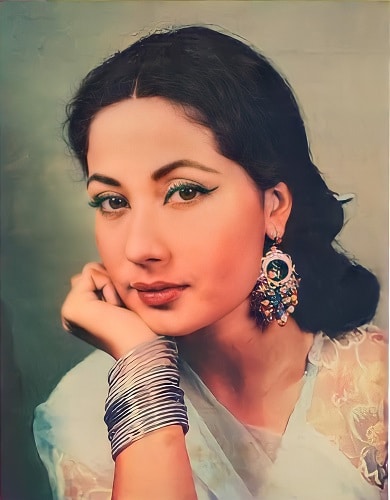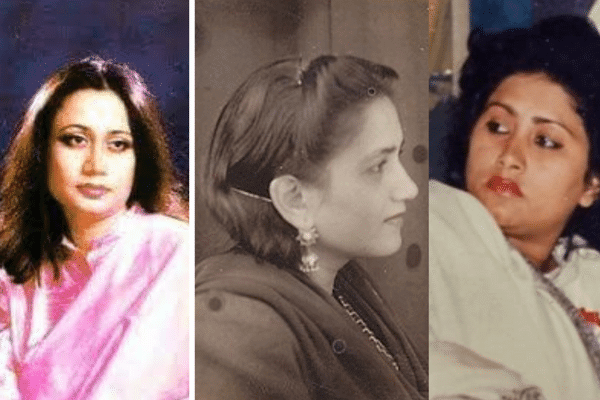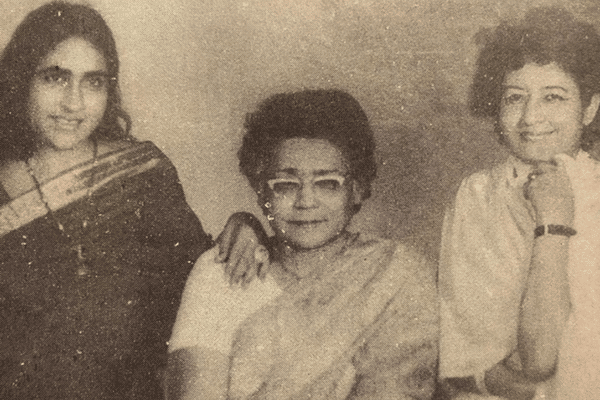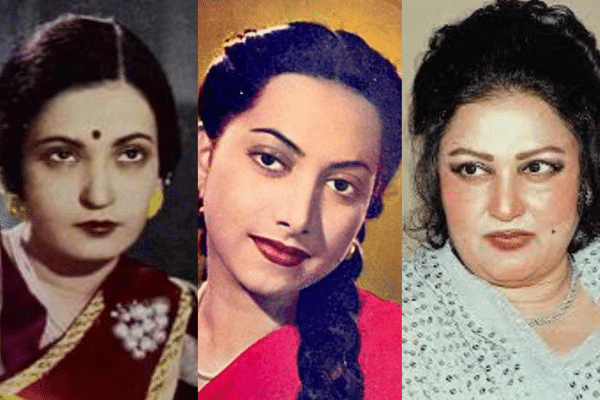For a form of poetry whose name is supposed to have been derived from a graceful female deer and is dedicated to love and other facets of the human condition, it is startling to find women missing from the glittering constellation of Urdu ghazal for well over two centuries since its inception in the early 18th century.
The reason is not difficult to ascertain. Ghazals, in the days before mass media and mass dissemination of knowledge, were only known and spread by recitation in public events like ‘mushairas‘ where prevailing social norms did not allow the attendance of women, leave alone their participation. There were women who wrote — but this was a most private endeavour and they usually remain obscure.
And there was rekhti. Said to originate in early 18th century Lucknow with then Urdu poetry’s enfant terrible Insha Allah Khan ‘Insha‘, and his cronies like Saadat Yaar Khan ‘Rangeen‘, Meer Yaar Ali ‘Jaan Sahib‘, it was an earlier form of “feminist” poetry, where male poets made use of women’s voices, idioms, mannerisms, and, even accents, to talk about issues from the female viewpoint — or what they imagined it to be
While rekhti was an affectation that generally fizzled out as decadent living declined, the social barriers persisted throughout the 18th and 19th centuries and change came only well into the 20th century.
And even then, the process has been slow and far from encompassing, as far as ghazals are concerned. Women singers like Begum Akhtar, Suraiyya, Noor Jahan, etc. all could interpret them in a musical format, but original writers took time to emerge and become famous.
While the likes of Ismat Chughtai, Qurratulain Hyder, Attia Hossein, Bano Qudsia, and many others have left their mark in Urdu ‘nasr’ (prose), especially novels and short stories, there are not many familiar names on the poetry side. Those with some knowledge of the field may recall actress Meena Kumari, who wrote under the pen name of ‘Naz’, or Parveen Shakir, whose life was tragically cut short by an accident.

Another name that may strike a chord is that of Fahmida Riaz, who fled Gen Zia ul-Haq’s dictatorship and was granted asylum in India by Prime Minister Indira Gandhi. She was, however, more of a ‘nazm‘ writer, and in the late 1990s, riled the right-wing in India with a bitingly satirical piece “Tum bilkul ham jaise nikle“, comparing their present course with the suicidal fanaticism that had almost doomed her country – and still can.
However, since the 1950s, there has been no shortage of accomplished women ghazal poets – though their names and fame usually remain confined to the dedicated aficionados of the genre. Let’s try to showcase a few who have shown they are no less than their male peers, though this can only be a representative selection.
One of the first – and foremost – was Ada Jafarey (1924-2015), or Ada Jafri as she is better known, whose early life was proof of the obstacles facing women poets even in the (fairly) modern world.
Born in Badaun in what was then the United Provinces and losing her father when she was just three, she had started writing ‘shayri’ from an early age, said to be 9 or 12, as ‘Ada Badayuni’, but lacked an outlet to portray her prowess.
Her mother was supportive of her craft, and later her husband, but society was not ready for independent-minded women. It was only in the late 1940s that as the wife of a senior Pakistan government official, did she get a due as a ‘shaira’ and eventually became the first published Urdu woman poet.
Though she dwelt on feminist themes like discrimination and dehumanisation of women and their sexual objectification, ‘Ada’ usually wrote in a gender-neutral mode, and should not be slotted away in a silo, as her work shows.
For Haath kaanton se kar liye zakhm/Phool baalon mein ik sajane ko, there is also Main aandhiyon ke paas talaash-e-saba mein hoon/Tum mujh se poochhte ho mera hausla hai kya or Jo charagh saare bujha chuke unhe intezar kahan raha/Ye sukoon ka daur-e-shadeed hai koi beqaraar kahan raha.

The ‘maqta‘, or the concluding sher of the ghazal where the poet’s ‘takhallus‘ figures in one telling couplet that can serve either as a focus or a counterpoint of the theme is a test for a master poet, and ‘Ada‘ does not disappoint on this count.
Be it Na bahlava na samjhauta judaai si judaai hai/’Ada’ socho to khushboo ka safar asaan nahi hota or Shayad kisi ne yaad kiya hai hame ‘Ada’/Kyun varna ashk maiil-e-toofan hai aaj phir or Ab se bada fareb hai khud zindagi ‘Ada’/Is hila-joo ke saath hain ham bhi bahaana-saz, she could deliver an intricate thought in evocative words.
While ‘Ada’ Jafri does deserve an entire piece to herself, let’s acquaint you all with some more woman poets – through their work.
Another pioneer was Zehra Nigah (1935-), who begins a ghazal Safar khud raftagi ka bhi ajab andaz ka tha/Kahi par rah bhoole the na ruk kar dam liya tha and ends Bahut din baad ‘Zehra’ tune kuch ghazlen to likhi/Na likhne ka kisi se kya koi vaadah kiya tha.
Then, there was Parveen Shakir (1952-94), who balanced between being a bureaucrat and a poet, and left us gems like: Awaz ke hamraah sarapa bhi to dekhen/Ae jaan-e-sukhan mein tera chahra bhi to dekhen, Mere badan ko nami khaa gayi ashkon ki/Bhari bahar mein jaise makaan dahta hai, and Nikle hai to raaste mein kahin shaam bhi hogi/Suraj bhi magar aayega is raah-guzar se.

Wajida Tabassum (1935-2011), apart from poetry, was a writer of novels and short stories, several of which have inspired Indian films, including Mira Nair’s “Kama Sutra” and TV serials. But these were not at the expense of shayri as verses like Ye bhi kya ehsan kam hain dekhiye na aap ka/Ho raha hai har taraf charcha hamara aap ka, Apne chehre se zulfen hata dijiye/Aur phir chand ka saamna kijiye, and Waqt to guzra magar kuch is tarah/Ham charaghon ki tarah jalte rahe.
And then a contemporary voice is Naseem Nikhat (1958-), who brings a rich imagination and a felicitous turn of phrase in her poetry as she says: “‘Ghalib’ ka rang ‘Mir’ ka lahja mujhe bhi de/Lafzon se khelne ka saliqa mujhe bhi de“.
Then, there is Apne chehre ko badalna to bahut mushkil hai/Dil bahal jayega aaina badal kar dekho and Sulagte hontho pe shabnam ki dastan rakh de/Zameen-e-sang pe sheese ka aasman rakh de.
Read More: Sahir Ludhianvi: 102 years young and more relevant than ever





